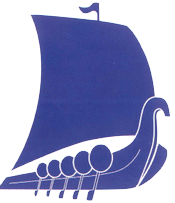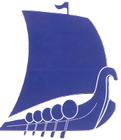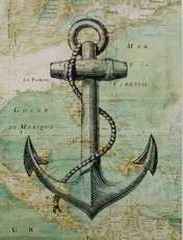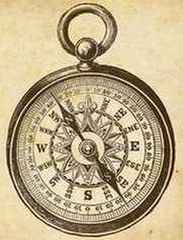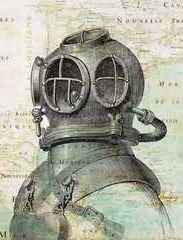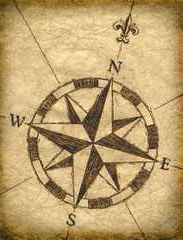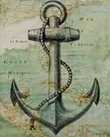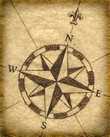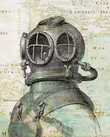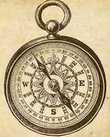Arklow Maritime & Heritage Museum Glossary
'Centuries of Sea-faring Heritage - A Story Worth Telling'
Arklow Maritime
& Heritage Museum Glossary
Arklow Maritime
& Heritage Museum
Sorry
Sail Map & Terminology
Nautical Terminology
Every profession has its jargon, and maritime related activities are awash with words and terms that are unfamiliar to many people. This short glossary might help clarify some of the vocabulary in this website.
We will be glad to add to it at any time, so if there is a word or phrase you came across that you don't fully understand and you can't find it here, let us know.
Click here to send us a term to add or for further information about nautical terms.
We will be glad to add to it at any time, so if there is a word or phrase you came across that you don't fully understand and you can't find it here, let us know.
Click here to send us a term to add or for further information about nautical terms.
Every profession has its jargon, and maritime related activities are awash with words and terms that are unfamiliar to many people.
This short glossary might help clarify some of the vocabulary in this website. You can also explore an interactive sail map on our desktop version of this page on your laptop or PC.
We will be glad to add to our list of terminology at any time, so if there is a word or phrase you came across that you don't fully understand and you can't find it here, let us know.
Click here to send us a term to add or for further information about nautical terms.
We will be glad to add to our list of terminology at any time, so if there is a word or phrase you came across that you don't fully understand and you can't find it here, let us know.
Click here to send us a term to add or for further information about nautical terms.
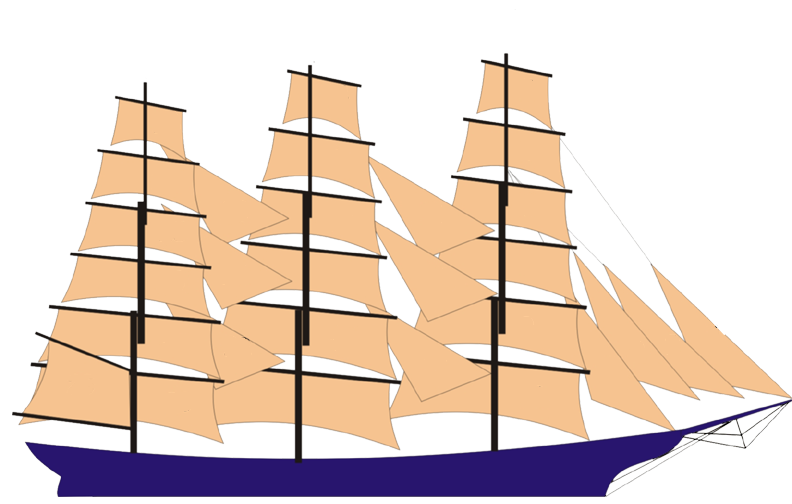
Point at any of the sails for the name.
Boom
Bow
Bowsprit
Course
Halyards
Hawser
Head
Helm
Jib
Jib-boom
Jury
Keel
Knots
Log
Mast
Plimsoll Line
Port
Ribs
Rig
Rigging
Rudder
Sheet
Shrouds
Spar
Starboard
Stern
Tiller
U-boat
Wheel
Bow
Bowsprit
Course
Halyards
Hawser
Head
Helm
Jib
Jib-boom
Jury
Keel
Knots
Log
Mast
Plimsoll Line
Port
Ribs
Rig
Rigging
Rudder
Sheet
Shrouds
Spar
Starboard
Stern
Tiller
U-boat
Wheel
A large beam to which the bottom of a sail is fixed.
The front of a ship. Correctly 'bows' as bow refers to each side.
A large spar projecting from the bows of a sailing ship.
The direction in which a ship or boat is going.
Ropes used for raising and lowering spars.
Heavy rope, usually at least five inches in diameter used for heavy duty tasks such as mooring to a quayside.
The toilet - originally a precarious perch at the bows (front or head) of the ship.
General name given to a steering device such as a tiller or wheel which changes the angle of the rudder to the keel to alter the course of a ship.
Triangular sail near the bows of a sailing ship. INNER JIB, OUTER JIB, FLYING JIB are also triangular sails attached to the jib-boom.
A large beam attached to the bowsprit to which the jibs (triangular sails) are attached at the bows of a sailing ship.
Makeshift repairs on a damaged vessel.
The lowest continuous beam on a vessel, best thought of as the backbone of the vessel to which the ribs are attached.
See Speed Log.
A ship's diary recording voyages and general conditions on board a vessel. See Speed Log.
The upright wood or metal poles which carry the spars and sails.
Marks on the sides of a ship showing the levels to which a ship can be safely loaded.
The left-hand side of a ship looking towards the bow (front).
The frames of a ship which give her her shape, as a human rib-cage does.
The number and configuration of masts, spars and sails to define the 'rig' of a vessel as a barque, barquentine, brig, brigantine, cutter, sloop, ketch, schooner, etc.
The array of ropes used as support (standing rigging) or maneouvrability (running rigging).
A large wooden or metal plate whose angle to the keel can be changed by the man at the wheel or tiller to alter course.
The name given to a rope used specifically to change the angle of a spar to the mast. Part of the running rigging.
Ropes used to support masts. Part of the standing rigging.
Large beams attached to the masts, from which the top edge of the sails are attached.
The right-hand side of a ship looking towards the bow (front).
The back of a ship.
A horizontal length of wooden or metal which fits into the top of the rudder. Used to alter course.
Short for unterseeboot, literally 'under-sea-boat', the name given to German submarines. Each u-boat was designated a number rather than a name for identification; for example U-20 which sank the LUSITANIA.
Used to steering a ship in the same way as a tiller is used on smaller craft.
The front of a ship. Correctly 'bows' as bow refers to each side.
A large spar projecting from the bows of a sailing ship.
The direction in which a ship or boat is going.
Ropes used for raising and lowering spars.
Heavy rope, usually at least five inches in diameter used for heavy duty tasks such as mooring to a quayside.
The toilet - originally a precarious perch at the bows (front or head) of the ship.
General name given to a steering device such as a tiller or wheel which changes the angle of the rudder to the keel to alter the course of a ship.
Triangular sail near the bows of a sailing ship. INNER JIB, OUTER JIB, FLYING JIB are also triangular sails attached to the jib-boom.
A large beam attached to the bowsprit to which the jibs (triangular sails) are attached at the bows of a sailing ship.
Makeshift repairs on a damaged vessel.
The lowest continuous beam on a vessel, best thought of as the backbone of the vessel to which the ribs are attached.
See Speed Log.
A ship's diary recording voyages and general conditions on board a vessel. See Speed Log.
The upright wood or metal poles which carry the spars and sails.
Marks on the sides of a ship showing the levels to which a ship can be safely loaded.
The left-hand side of a ship looking towards the bow (front).
The frames of a ship which give her her shape, as a human rib-cage does.
The number and configuration of masts, spars and sails to define the 'rig' of a vessel as a barque, barquentine, brig, brigantine, cutter, sloop, ketch, schooner, etc.
The array of ropes used as support (standing rigging) or maneouvrability (running rigging).
A large wooden or metal plate whose angle to the keel can be changed by the man at the wheel or tiller to alter course.
The name given to a rope used specifically to change the angle of a spar to the mast. Part of the running rigging.
Ropes used to support masts. Part of the standing rigging.
Large beams attached to the masts, from which the top edge of the sails are attached.
The right-hand side of a ship looking towards the bow (front).
The back of a ship.
A horizontal length of wooden or metal which fits into the top of the rudder. Used to alter course.
Short for unterseeboot, literally 'under-sea-boat', the name given to German submarines. Each u-boat was designated a number rather than a name for identification; for example U-20 which sank the LUSITANIA.
Used to steering a ship in the same way as a tiller is used on smaller craft.
Boom - A large beam to which the bottom of a sail is fixed.
Bow - The front of a ship. Correctly 'bows' as bow refers to each side.
Bowsprit - A large spar projecting from the bows of a sailing ship.
Course - The direction in which a ship or boat is going.
Halyards - Ropes used for raising and lowering spars.
Hawser - Heavy rope, usually at least five inches in diameter used for heavy duty tasks such as mooring to a quayside.
Head - The toilet - originally a precarious perch at the bows (front or head) of the ship.
Helm - General name given to a steering device such as a tiller or wheel which changes the angle of the rudder to the keel to alter the course of a ship.
Jib - Triangular sail near the bows of a sailing ship. INNER JIB, OUTER JIB, FLYING JIB are also triangular sails attached to the jib-boom.
Jib-boom - A large beam attached to the bowsprit to which the jibs (triangular sails) are attached at the bows of a sailing ship.
JuryKeel - The lowest continuous beam on a vessel, best thought of as the backbone of the vessel to which the ribs are attached.
Knots - See Speed Log.
Log - A ship's diary recording voyages and general conditions on board a vessel. See Speed Log.
Mast - he upright wood or metal poles which carry the spars and sails.
Plimsoll Line - Marks on the sides of a ship showing the levels to which a ship can be safely loaded.
Port - The left-hand side of a ship looking towards the bow (front).
Ribs - The frames of a ship which give her her shape, as a human rib-cage does.
Rig - The number and configuration of masts, spars and sails to define the 'rig' of a vessel as a barque, barquentine, brig, brigantine, cutter, sloop, ketch, schooner, etc.
Rigging - The array of ropes used as support (standing rigging) or maneouvrability (running rigging).
Rudder - A large wooden or metal plate whose angle to the keel can be changed by the man at the wheel or tiller to alter course.
Sheet - The name given to a rope used specifically to change the angle of a spar to the mast. Part of the running rigging.
Shrouds - Ropes used to support masts. Part of the standing rigging.
Spar - Large beams attached to the masts, from which the top edge of the sails are attached.
Starboard - The right-hand side of a ship looking towards the bow (front).
Stern - The back of a ship.
Tiller - A horizontal length of wooden or metal which fits into the top of the rudder. Used to alter course.
U-boat - Short for unterseeboot, literally 'under-sea-boat', the name given to German submarines. Each u-boat was designated a number rather than a name for identification; for example U-20 which sank the LUSITANIA.
Wheel - Used to steering a ship in the same way as a tiller is used on smaller craft.
